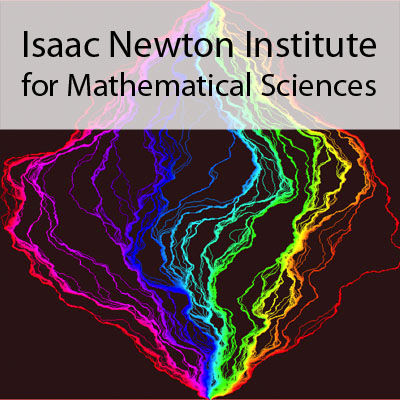The Compulsive Gambler process
1 hour 2 mins,
262.77 MB,
WebM
640x360,
29.97 fps,
44100 Hz,
578.66 kbits/sec
Share this media item:
Embed this media item:
Embed this media item:
About this item

| Description: |
Aldous, D (University of California, Berkeley)
Tuesday 17 March 2015, 10:00-11:00 |
|---|
| Created: | 2015-03-18 13:00 |
|---|---|
| Collection: | Random Geometry |
| Publisher: | Isaac Newton Institute |
| Copyright: | Aldous, D |
| Language: | eng (English) |
| Distribution: |
World
|
| Explicit content: | No |
| Aspect Ratio: | 16:9 |
| Screencast: | No |
| Bumper: | UCS Default |
| Trailer: | UCS Default |
| Abstract: | Co-authors: Dan Lanoue (U.C. Berkeley), Justin Salez (Paris 7)
In the Compulsive Gambler process there are n agents who meet pairwise at random times (i and j meet at times of a rate-νij Poisson process) and, upon meeting, play an instantaneous fair game in which one wins the other's money. The process seems pedagogically interesting as being intermediate between coalescent-tree models and interacting particle models, and because of the variety of techniques available for its study. Some techniques are rather obvious (martingale structure; comparison with Kingman coalescent) while others are more subtle (an ``exchangeable over the money elements" property, and a ``token process" construction reminiscent of the Donnelly-Kurtz look-down construction). One can study both kinds of n→∞ limit. The process can be defined under weak assumptions on a countable discrete space (nearest-neighbor interaction on trees, or long-range interaction on the d-dimensional lattice) and there is also a continuous-space extension called the Metric Coalescent. |
|---|---|
Available Formats
| Format | Quality | Bitrate | Size | |||
|---|---|---|---|---|---|---|
| MPEG-4 Video | 640x360 | 1.93 Mbits/sec | 901.61 MB | View | Download | |
| WebM * | 640x360 | 578.66 kbits/sec | 262.77 MB | View | Download | |
| iPod Video | 480x270 | 523.03 kbits/sec | 237.51 MB | View | Download | |
| MP3 | 44100 Hz | 250.64 kbits/sec | 113.82 MB | Listen | Download | |
| Auto | (Allows browser to choose a format it supports) | |||||

